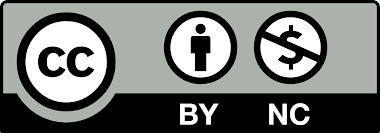Guidance for Authors
As the providers of content, authors are crucial to scholarly publishing. The journal relies on their diligent research and assiduous adherence to high ethical standards in order to produce quality issues that will be valued by our readership. The IASSIST Quarterly endorses the World Conferences on Research Integrity's (WCRI's) 2010 international standards for authors, known as the Singapore Statement on Research Integrity.
Key Information
Note about Privacy & the Right to Be Forgotten
Use of GenAI in Manuscripts
Authorship and Contributorship
Acknowledging Sources
Conflicts of Interest/Competing Interests
Data
Copyright
Review
WCRI's Guidance for Authors
Key Information
Authors retain rights to articles published in the IASSIST Quarterly. Authors are encouraged to deposit the published version of their article in an institutional or disciplinary repository immediately on publication. Pre-print versions posted online should include a citation and link to the final published version in the IASSIST Quarterly as soon as the issue is available; post-print versions (including the final publisher's PDF) should include a citation and link to the journal's website.
Authors are not charged any fees for publishing in the IASSIST Quarterly.
Guidance about required formatting of articles is provided in the author template, linked in the Author Guidelines section of the Submissions page. Manuscripts that do not use the template will be returned for authors to convert to the proper format. Please be aware that the "placeholder" text of the template contains important formatting information and also instructions for how to upload revisions following peer review.
Note about Privacy & the Right to Be Forgotten
As a general rule but in compliance with the European Union’s GDPR and other privacy laws, IASSIST Quarterly collects minimal personal information from authors, reviewers, and editors. Only three fields are required: name, email address, and country. Editors use the GDPR's minimisation principle to limit the amount of personal data retained. In scholarly publishing, however, data concerning the authors, editors, reviewers, and others involved in the editorial and publishing process remain necessary for the purposes of the journal, and, as such, form part of a record that the GDPR allows “for archiving purposes in the public interest, scientific or historical research purposes or statistical purposes the preservation of which is in the public interest” (Recital 65). Consequently, the journal's practice is to maintain permanent records for all published articles including authors’ names, e-mails, and affiliations, as well as non-public information about those involved in producing them.
Those who are not published and not part of the publication process (i.e., readers) retain the right to be forgotten. Editorial staff lose access to submission records as soon as they decline a manuscript, but non-published authors who wish to be removed from the system entirely may contact the editors to request this (we would need to submit such requests to the platform host). Visitors to the site have the right to decline session cookies and read anonymously.
Use of Generative AI (GenAI) in Manuscripts
Responsible conduct of research requires that authors take responsibility for properly attributing ideas and credit; ensuring the accuracy of facts; and relying on authentic sources. Therefore, authors must be prepared to assume responsibility for the entire content of their manuscript, certifying its originality and accuracy, including any and all content sourced from GenAI tools. Use of GenAI tools should never replace human judgement, assessment, and confirmation of apparent results. For these reasons, use of GenAI for writing the text of an article is prohibited. Authors must also disclose the extent to which they have used GenAI tools (specifically the kind based on Large Language Models [LLMs]), in the course of their research, detailing in the methodology or acknowledgements sections (as appropriate) which tools were used at which steps for what purposes. This includes all content sourced from such tools, e.g., figures, code, etc. Citations for such use must be included in the Reference list and should contain a link to the search where possible.
Purposes for which GenAI tools might legitimately be employed in preparing manuscripts include (but are not limited to) use of GenAI or GenAI-assisted tools for research ideation; as part of the research design or research method (e.g., data exploration or processing); searching for relevant literature; translating text into English from another language; polishing (e.g., correcting spelling and grammar); and so forth. Such uses should be included in the methodology or acknowledgements section, as appropriate. (Please note that for the purposes of this policy, the term GenAI does not include grammar-checking tools, citation software, or plagiarism detectors which don’t employ the use of LLMs. Use of these kinds of tools does not need to be disclosed or cited in submitted manuscripts.)
In addition, authors must be aware that when information is entered into most GenAI tools, the organization which runs the tool will, in most cases, ingest the entire query (including any attachments) into its LLM. Authors should be aware of this possibility and how it may impact the privacy of participants in their studies, as well as how it may impact their own privacy and intellectual property. For this reason, editorial staff and reviewers may not enter materials from submitted manuscripts into GenAI tools as this would constitute a violation of the confidentiality of the peer review process.
Authorship and Contributorship
Only persons who meet the following authorship criteria should be listed as authors in the manuscript as they must be able to take public responsibility for the content: (i) made significant contributions to the conception, design, execution, data acquisition, or analysis/interpretation of the study; and (ii) drafted the manuscript or revised it critically for important intellectual content; and (iii) have seen and approved the final version of the paper and agreed to its submission for publication. (However, the list of contributors may well be longer. Authors should reference the Contributor Role Taxonomy [CRediT] for more information about roles that must be considered. More information about implementing CRediT is available here.)
Please note: As the Committee on Publication Ethics (COPE) points out, GenAI tools cannot be listed as an author since they cannot take responsibility for the submitted work. More fully, “[a]s non-legal entities, they cannot assert the presence or absence of conflicts of interest nor manage copyright and license agreements.”
The corresponding author should ensure that all appropriate coauthors (according to the above definition) and no inappropriate coauthors are included in the authors’ list, and verify that all coauthors have seen and approved the final version of the manuscript and agreed to its submission for publication. It is the collective responsibility of all the individuals who have conducted the work to determine who should be listed as authors, as well as the order in which authors should be listed.
Aside from authors, all persons who made substantial contributions to the work reported in the manuscript (according to the previously mentioned Contributor Role Taxonomy [CRediT]) should be mentioned in the "Acknowledgements" section after their written permission to be named has been obtained.
A detailed list of contributors is required in the authors’ Publication Agreement, which must be signed by all contributors and submitted with the manuscript (e-signing is accepted). If the Agreement is missing or incomplete, it must be provided to editorial staff before a manuscript will be sent for review.
Acknowledging Sources
Authors should cite publications that have been influential in determining the nature of the reported work. Information obtained privately (from conversation, correspondence, or discussion with third parties) must not be used or reported without explicit, written permission from the source. Authors should not use information obtained in the course of providing confidential services, such as refereeing manuscripts or grant applications, unless they have obtained the explicit written permission of the author(s) of the relevant work(s).
Authors must cite specific content that was obtained using Generative Artificial Intelligence (GenAI) tools. See additional information in the Use of GenAI in Manuscripts section above.
Authors must cite their own data, whether collected themselves and archived in a data repository or used under license from any other source.
Conflicts of Interest/Competing Interests
All authors must declare any competing interests relevant to the article. A competing interest can occur when an author has a financial, commercial, legal, or professional relationship with other organizations or with the people which could influence the research or interpretation of the results. Authors should also declare any associations which can be perceived by others as a competing interest.
Data
As a journal representing the work of data professionals, authors are expected to collect or acquire data in accordance with generally accepted research protocols. These must be approved by their institutional review boards as appropriate and/or properly licensed for research use by the publisher.
IASSIST Quarterly strongly encourages authors to deposit datasets used in their research publication in data repositories to enable interlinking of articles and data and support FAIR data principles. Data could be deposited in Zenodo, OpenICPSR, the author’s institutional repository, or another open repository. Data should be reciprocally cited, i.e., the manuscript must include a citation for the data source in the Reference list, and any repository record for the dataset should include a citation for the article. (Repository records can be edited after deposit to include retroactively a citation for the article.)
Copyright
Authors retain copyright to articles published in the IASSIST Quarterly. The Creative Commons-Attribution-Noncommercial License 4.0 International applies to all works published by IASSIST Quarterly.
Authors are encouraged to deposit the published version of their article in an institutional or disciplinary repository immediately on publication. Pre-print versions posted online should include a citation and link to the final published version in the IASSIST Quarterly as soon as the issue is available; post-print versions (including the final publisher's PDF) should include a citation and link to the journal's website.
Review
IQ uses double-anonymous review procedures: authors will not know who is reviewing their paper; neither will reviewers know whose paper they are reviewing. If authors have questions about suggested revisions, they should ask the editors for guidance. Regardless of the review decision, authors should not attempt to identify reviewers.







